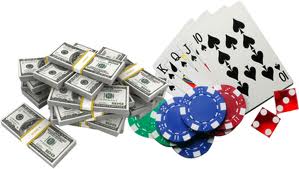 One very useful tool for measuring your success in poker tournaments is return on investment (ROI). The basic definition of ROI is how much money you’re earning back from your buy-ins. Unsuccessful players will have a negative ROI, while really good poker players will have positive ROI numbers, meaning that they’re profitable.
One very useful tool for measuring your success in poker tournaments is return on investment (ROI). The basic definition of ROI is how much money you’re earning back from your buy-ins. Unsuccessful players will have a negative ROI, while really good poker players will have positive ROI numbers, meaning that they’re profitable.
So obviously it’s good to know what your poker ROI is, but the only problem is that many beginning players aren’t exactly sure how to calculate their return on investment. That said, let’s take a look at the formula for measuring ROI in SNG’s and MTT’s:
(tournament winnings – tournament buy-ins) / tournament buy-ins x 100 = ROI %
Now that we’ve covered the ROI formula, it’s worth looking at an example. To set this up, let’s say that you play 200 SNG’s with a $5 + $0.50 buy-in ($1,100 total buy-ins), and make $1,250 in total profit. This would make your formula and answer look like the following:
($1,250 – $1,100) / $1,100 x 100 = 13.6% ROI
This is actually a really good ROI no matter what stakes you play. To put this into number form, you would theoretically earn about $0.75 in profit for every $5.50 SNG you played.
However, it is worth mentioning that 200 tournaments isn’t nearly a big enough sample size for determining whether you’re a truly successful player. After all, online poker is full of swings, and sometimes these swings last for hundreds of tourneys.
But this doesn’t mean you should neglect to keep track of your poker ROI because it can be a very useful tool along the way. Just don’t obsess over it with a small sample size because you can’t really tell much from this. More importantly, don’t become lax and stop studying poker strategy just because you initially start off with a really good ROI.